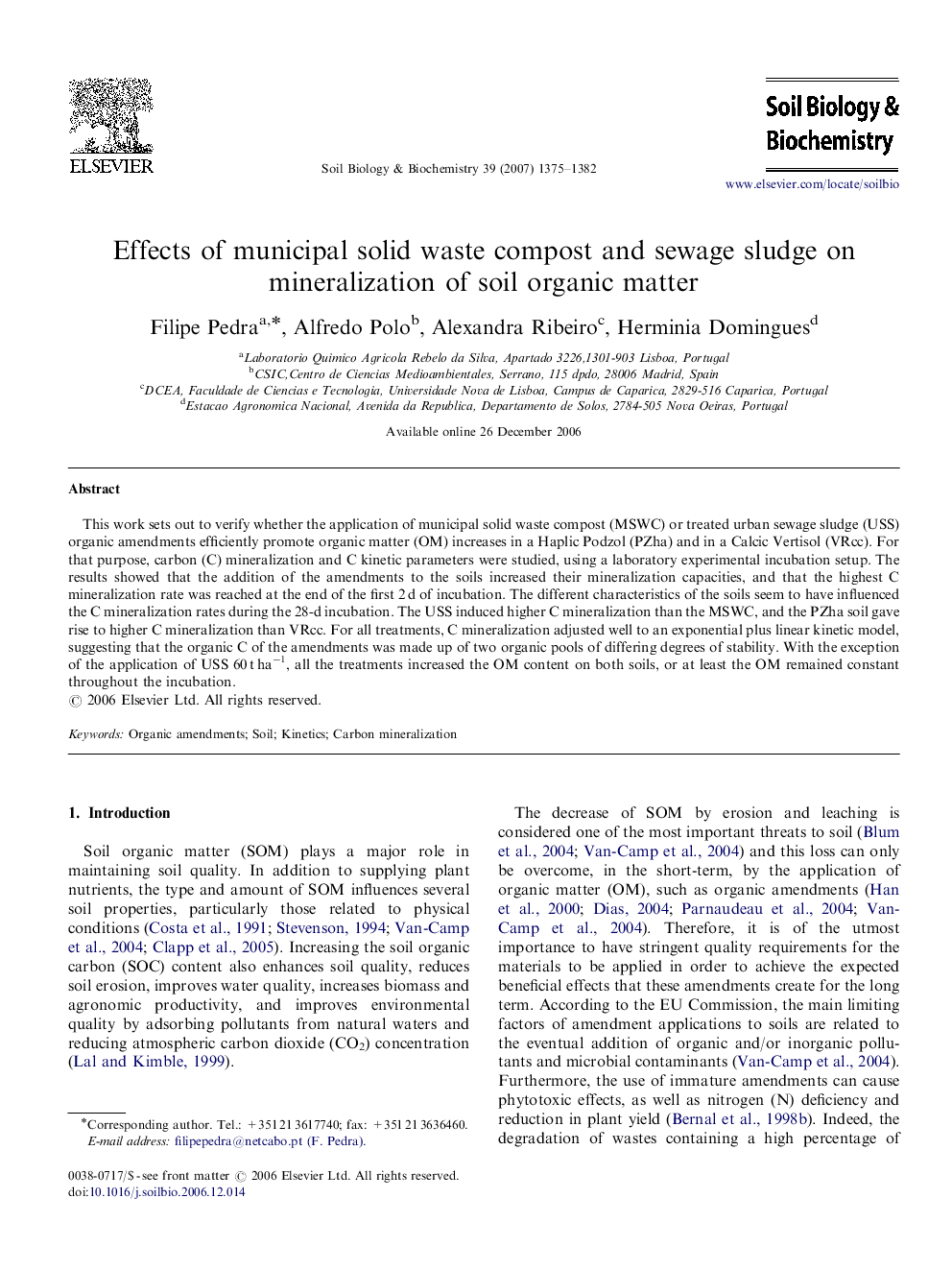| Article ID | Journal | Published Year | Pages | File Type |
|---|---|---|---|---|
| 2027068 | Soil Biology and Biochemistry | 2007 | 8 Pages |
This work sets out to verify whether the application of municipal solid waste compost (MSWC) or treated urban sewage sludge (USS) organic amendments efficiently promote organic matter (OM) increases in a Haplic Podzol (PZha) and in a Calcic Vertisol (VRcc). For that purpose, carbon (C) mineralization and C kinetic parameters were studied, using a laboratory experimental incubation setup. The results showed that the addition of the amendments to the soils increased their mineralization capacities, and that the highest C mineralization rate was reached at the end of the first 2 d of incubation. The different characteristics of the soils seem to have influenced the C mineralization rates during the 28-d incubation. The USS induced higher C mineralization than the MSWC, and the PZha soil gave rise to higher C mineralization than VRcc. For all treatments, C mineralization adjusted well to an exponential plus linear kinetic model, suggesting that the organic C of the amendments was made up of two organic pools of differing degrees of stability. With the exception of the application of USS 60 t ha−1, all the treatments increased the OM content on both soils, or at least the OM remained constant throughout the incubation.
